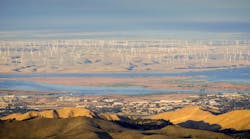About the author: Chris Landt is product manager for CONTECH Construction Products Inc. Landt can be reached at 407.497.4155 or by e-mail at [email protected].
Dry-weather diversion units reduce a beach community’s indicator bacteria levelsRelated search terms from www.waterinfolink.com: nuisance flows, diversion unit, TMDL
As a world-renowned tourist destination for diving, surfing, fishing and swimming, the city of Laguna Beach, Calif., understands keeping its beaches clean is of the utmost importance. The coastal waters within the city must meet stringent water quality standards as mandated by the state of California for full-contact aquatic recreation. If levels of indicator bacteria exceed standard guidance limits, the Orange County Health Department posts beaches as closed.
The State Water Quality Control Board (SWQCB) has listed many Laguna Beach beaches on the 303d List of Impaired Water Bodies for indicator bacteria. For this reason, the city must conform to requirements of upcoming total maximum daily load limits for beaches and creeks, currently under development by the San Diego Regional Water Quality Control Board.
Laguna Beach officials determined that dry-weather nuisance flows from storm drain outlets on the beach could be a source of bacteria during the summer season. These flows, which come from irrigation overspray, car washing, dewatering and illegal discharges such as hosing of driveways, can convey trash, sediment, pet waste and other pollutants to storm pipes.
Because it is constantly wet with nutrient-rich water, the storm system has the potential to become an incubator for additional bacterial growth, which could lead to high bacteria concentrations in flows discharged to the beach.
Rerouting Runoff
With funding from the SWQCB as part of the Clean Beaches Initiative grant program, the city launched two projects: the Laguna Beach Storm Drainage Pollution Control Project and the Laguna Main Beach Pollution Control Project.
The projects installed six urban water division systems to reroute dry-weather flows from high-priority storm drains on the beach to nearby sewer lines for treatment at the regional sewer treatment plant. The grant program required the city to monitor the installations to assess system impact on ocean bacteria levels.
The city installed three types of diversion/treatment structures—custom, seasonal and proprietary—to remove sediment, trash and debris before discharge into the sanitary sewer system. The custom unit is located inside a catch basin and uses a trough to catch nuisance flows and debris; the diversion is connected to a nearby sewer manhole.
For the summer-months diversion, the Laguna Canyon Channel outlet is dammed with beach sand to prevent nuisance flows from entering the ocean. A diversion pump is installed within a perforated plastic can behind the dam, which diverts flows to a nearby sewer manhole.
The remaining sites use continuous deflective separation (CDS) units from CONTECH Construction Products Inc. Using patented CDS technology, the systems screen, separate and trap debris, sediment and oil from runoff, providing treatment of nuisance dry-weather flows. During high-flow events, to avoid overwhelming the sewer system, flows are bypassed. The design of the CDS system allows high flows to pass through the unit without washing out captured trash and sediment.
System & Water Quality Monitoring
The projects began in early 2005, and construction took place in the winter of 2006. All diversions were completed and online by April 1, 2007.
To best measure the systems’ effectiveness at reducing bacteria levels and capturing flows and pollutants, both pre- and post-construction data was collected. Monitoring began in March 2006 and continued through September 2008.
Results showed a positive effect on ocean water quality. City flow data showed that the six diversion structures redirected nearly 52,000 gal of nuisance flow per day to the treatment plant. In one year, flows diverted from the beach outlets to the sewer exceeded 11 million gal.
According to Laguna Beach’s final project report, more than 12,000 lb of trash, sludge and debris was vacuumed out of the CDS units and 70 lb of floating debris removed during the first year of operation. The systems prevented this pollution from being discharged into the ocean.
The beach bacterial monitoring program data showed measureable improvements in ocean water bacteria levels. The comparison of pre- and post-construction data showed that once the six diversion systems were activated, beach water quality improved. This was attributed to both the direct bacteria diversion and the debris capture.
Based on the success of this and other diversion projects, Laguna Beach has applied to the state for de-listing of beaches protected by diversions from the 303d List of Impaired Water Bodies. Furthermore, the diversion/treatment units have been a critical component in all city beaches achieving straight “A’s” during dry weather on the California Heal the Bay’s annual beach report card and achieving “beach buddy” status in the Natural Resources Defense Council’s assessment of the cleanest beaches in America.
For more information on this project, visit www.lagunabeachcity.net/government/departments/waterquality/projects/cbi_urds/lb_cbi_8687_final_report.pdf.
SIDEBAR
Come on in, the Water’s Fine
The U.S. Environmental Protection Agency (EPA) has released a national summary of its annual beach report findings for the 2008 swimming season. For the third consecutive year, U.S. coastal and Great Lakes beaches demonstrated an approximately 95-percent swimming season "open" rate—that is, they were not under an advisory or closed to the public due to dangerous bacteria levels. Other key findings include:
- Of the 3,740 beaches monitored, 32 percent had at least one advisory or closure.
- Overall, coastal participants— 30 states and five territories— reported 5,400 public health- risk notification actions.
- 91 percent of advisory and closure actions were in effect for one week or less.
As authorized by the Beaches Environmental Assessment and Coastal Health (BEACH) Act of 2000, each year the EPA provides grants to coastal and Great Lakes states, territories and eligible tribes to monitor their appropriate beaches and notify the public when water sampling identifies potential health problems.
For more information, visit www.epa.gov/waterscience/beaches.
Download: Here

